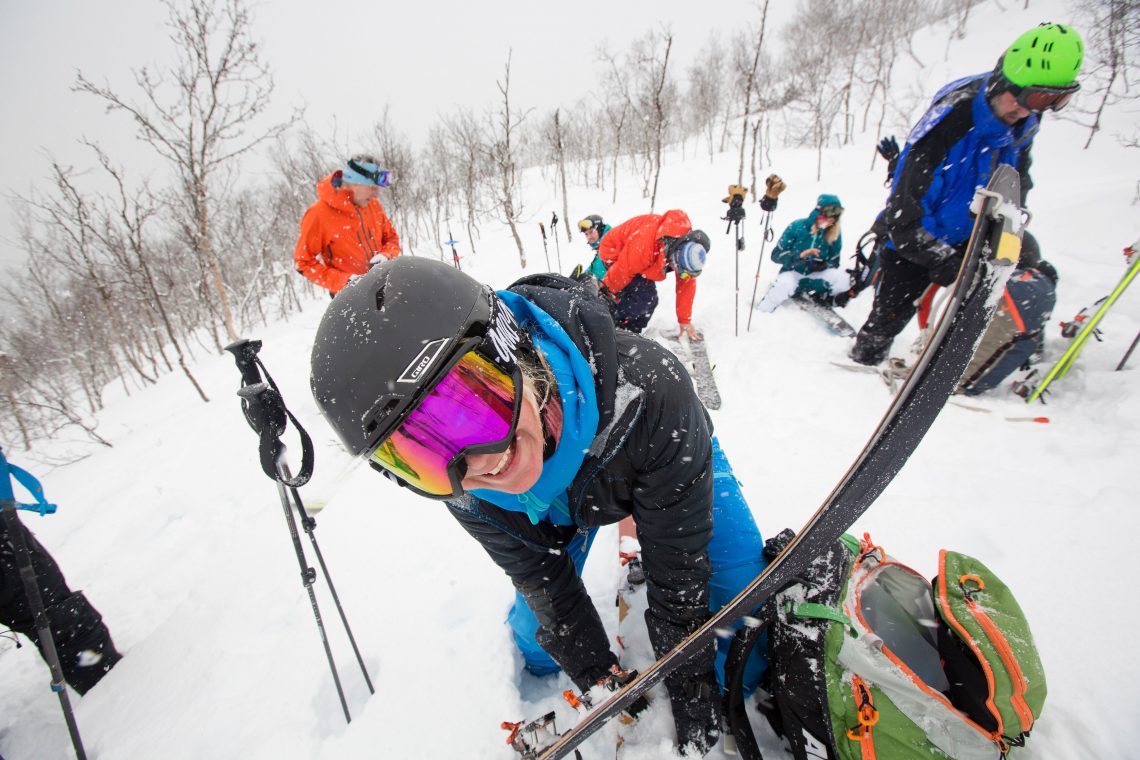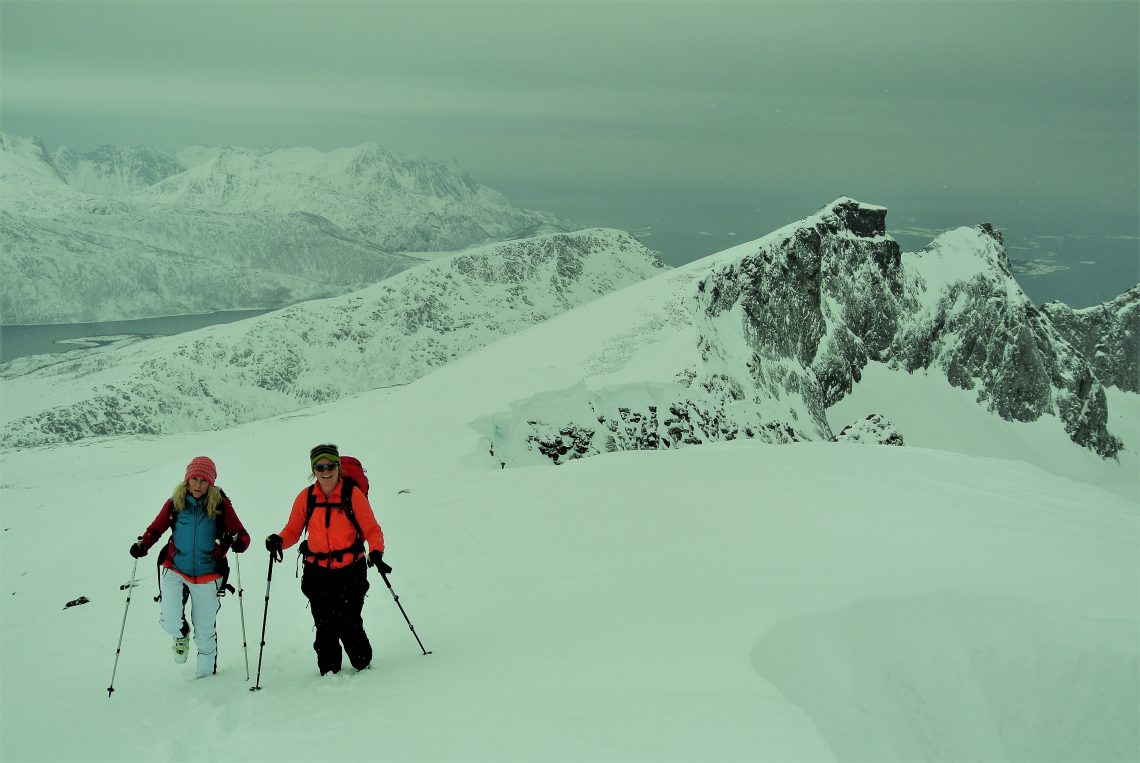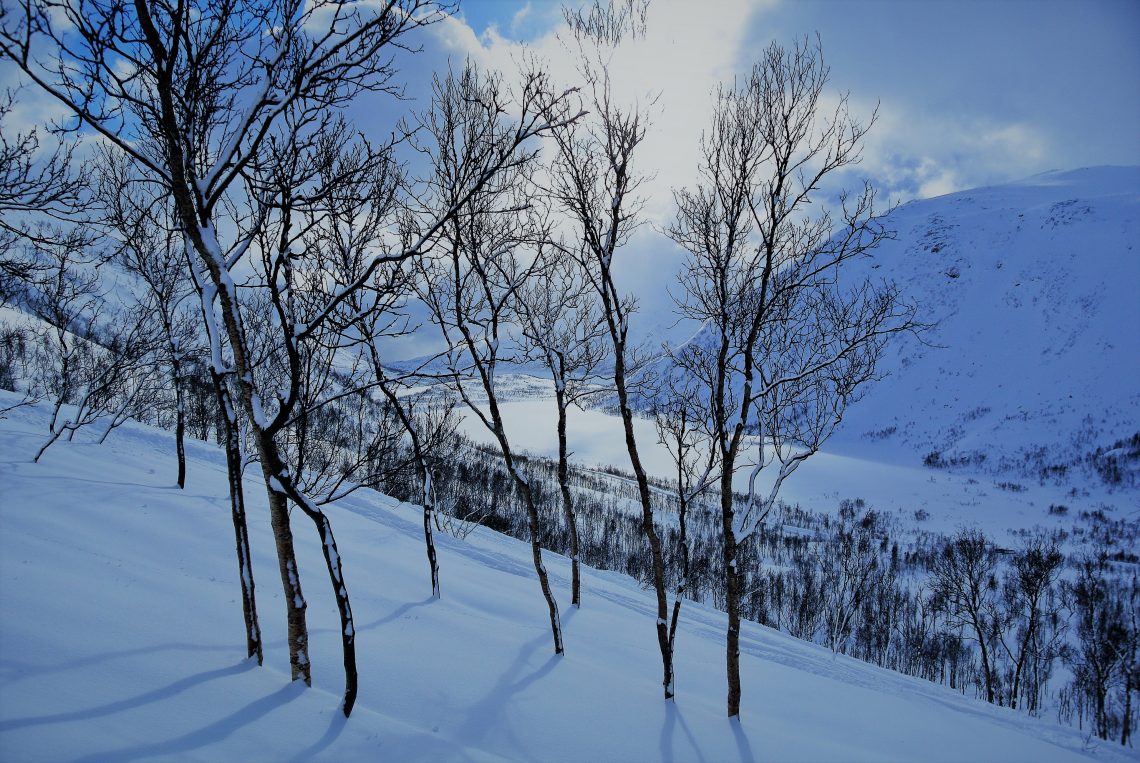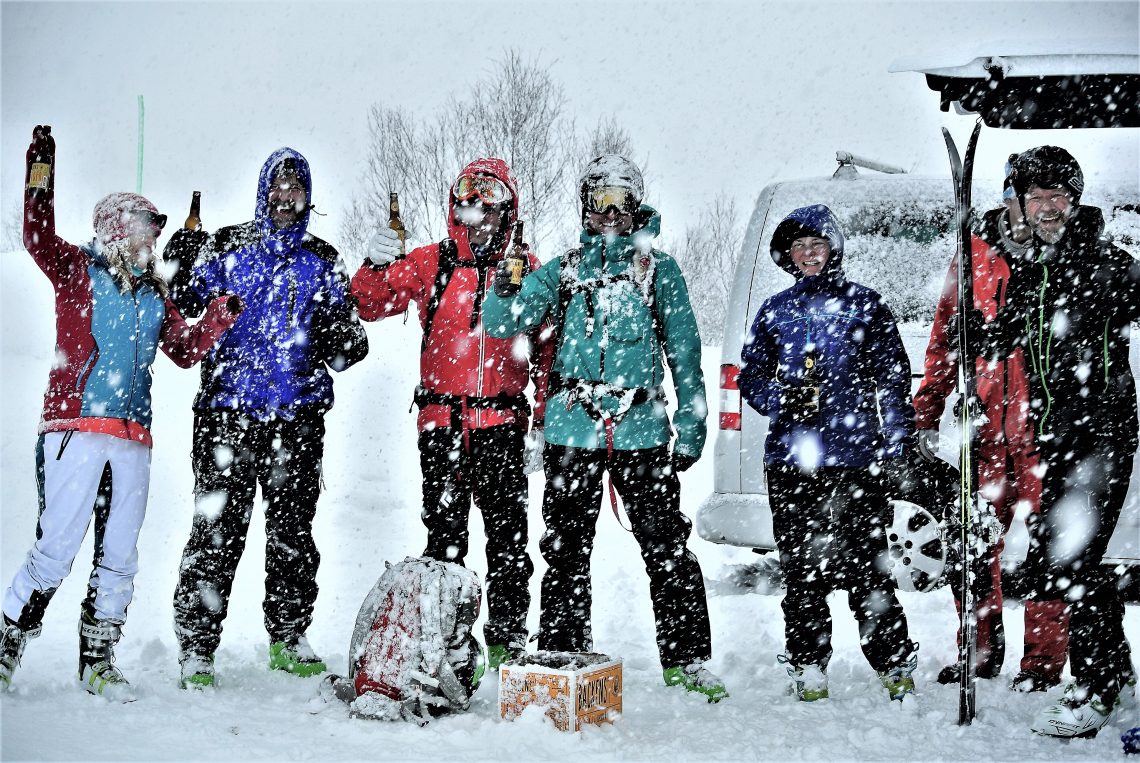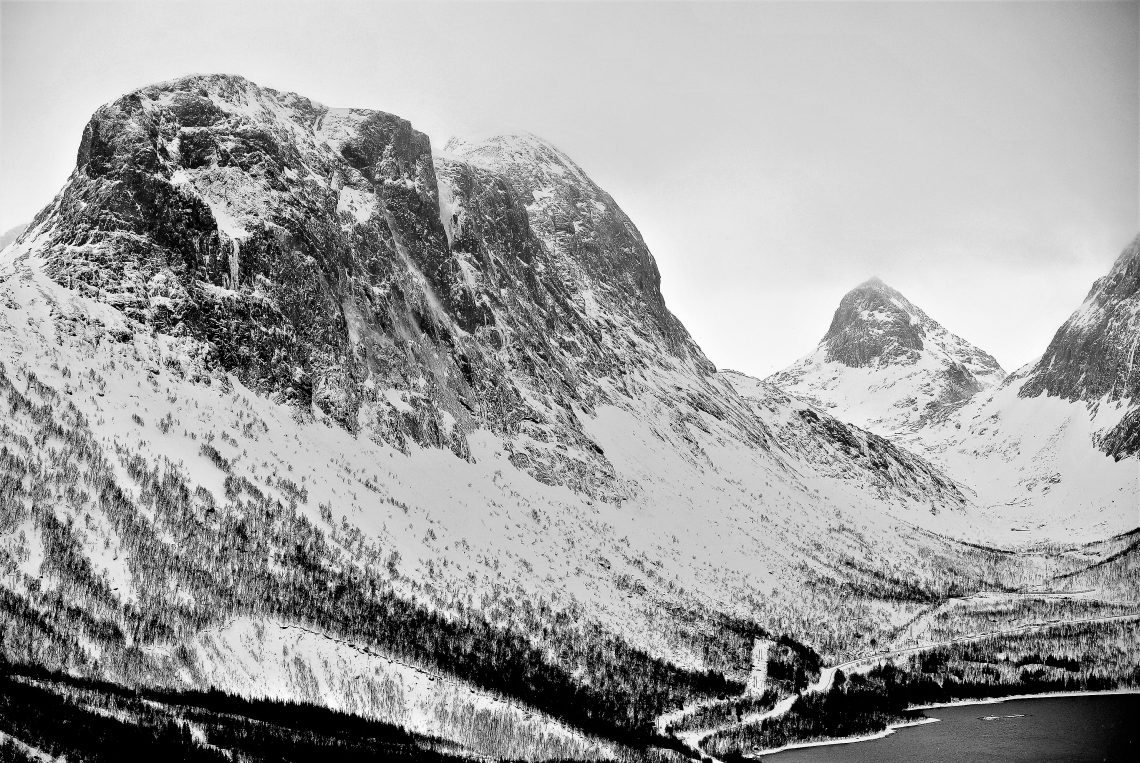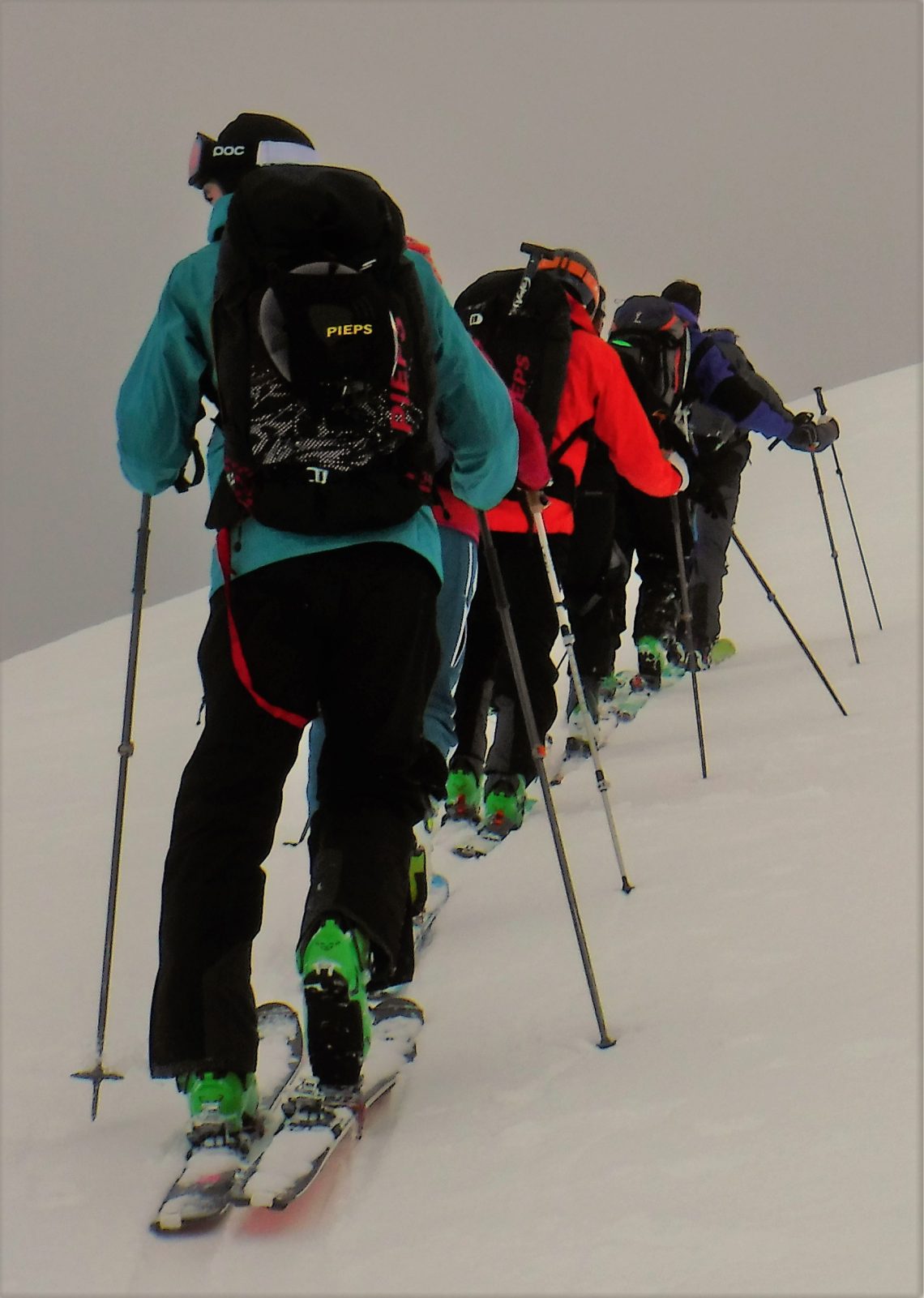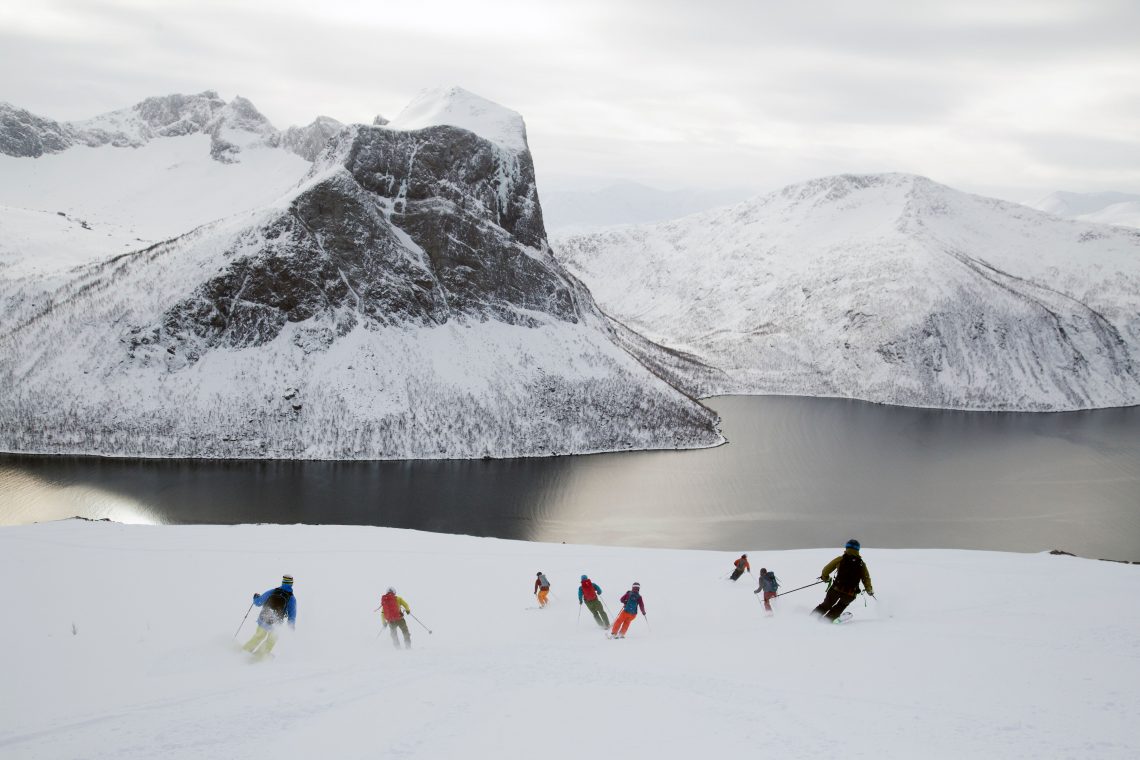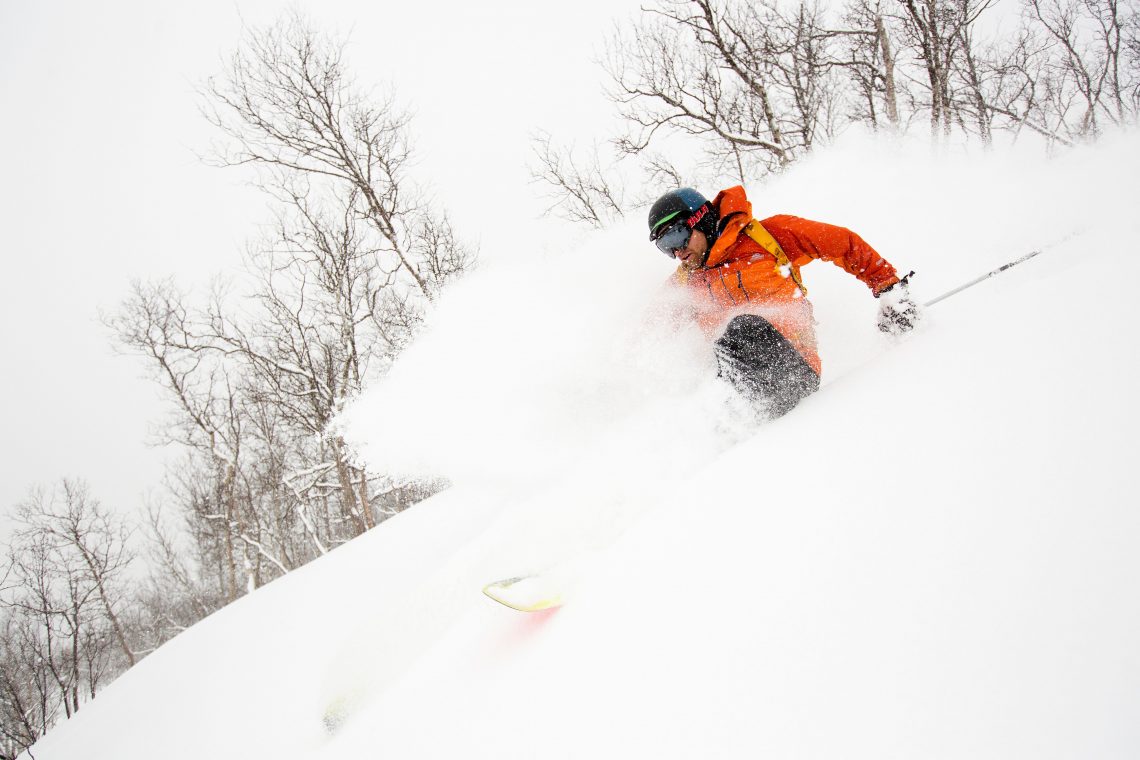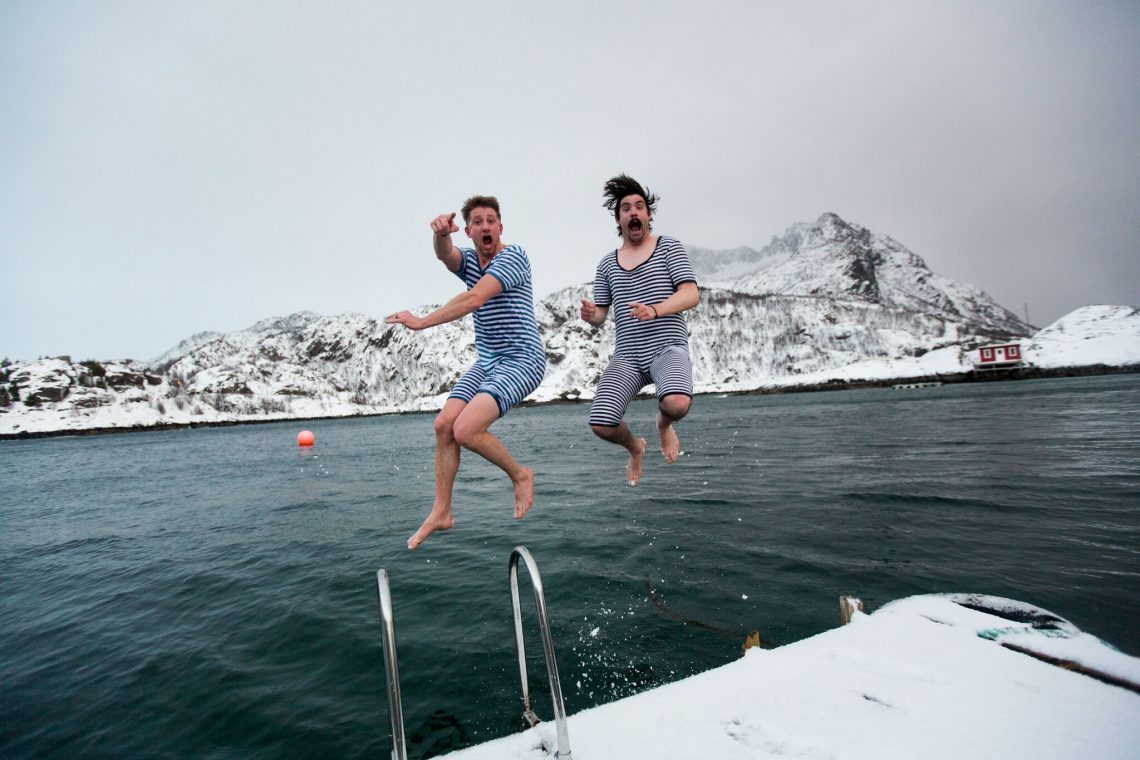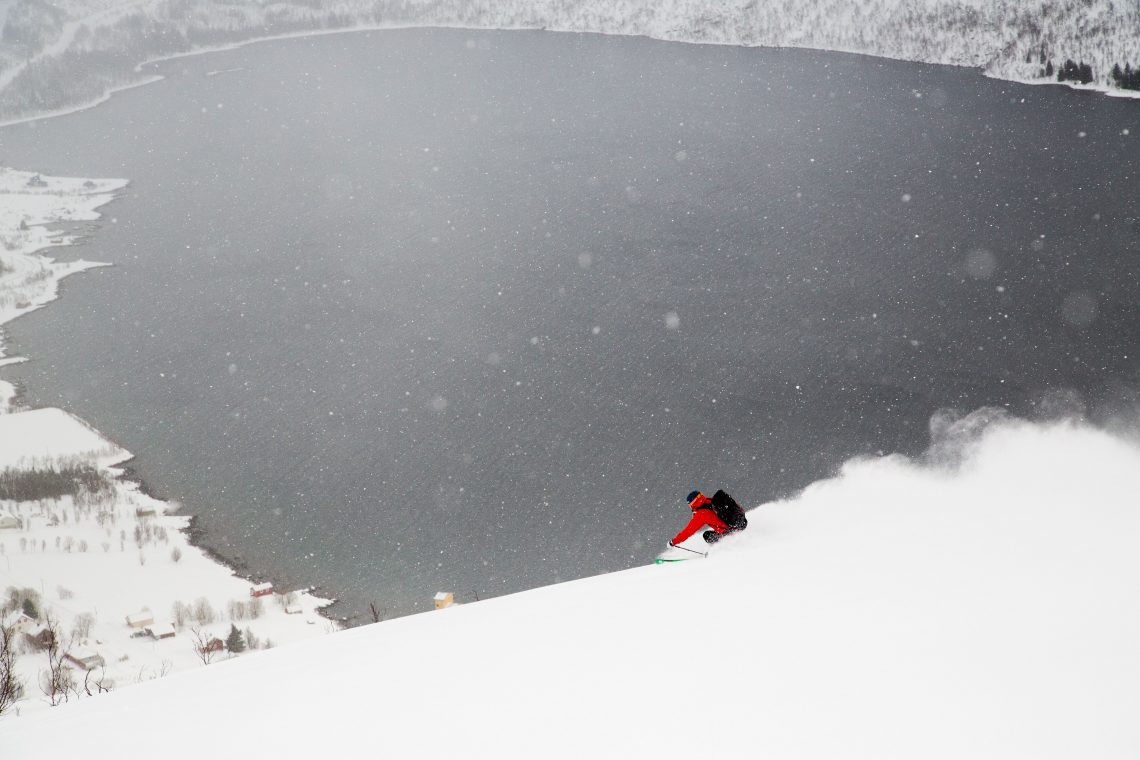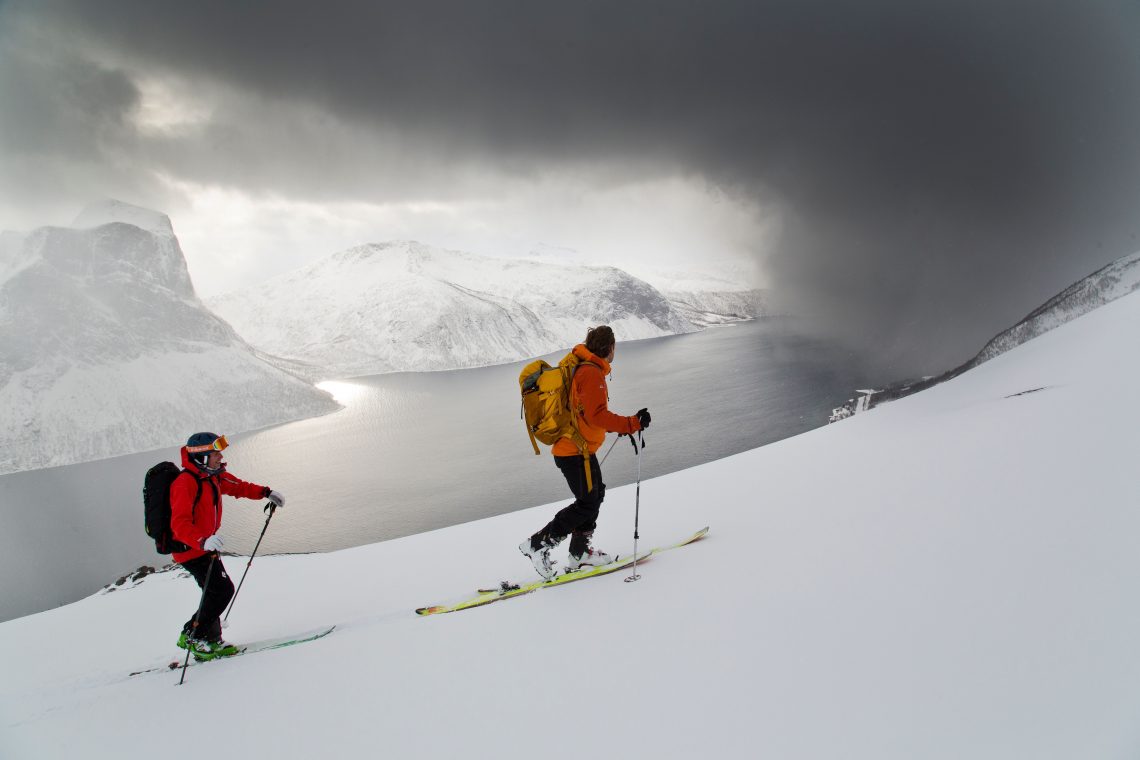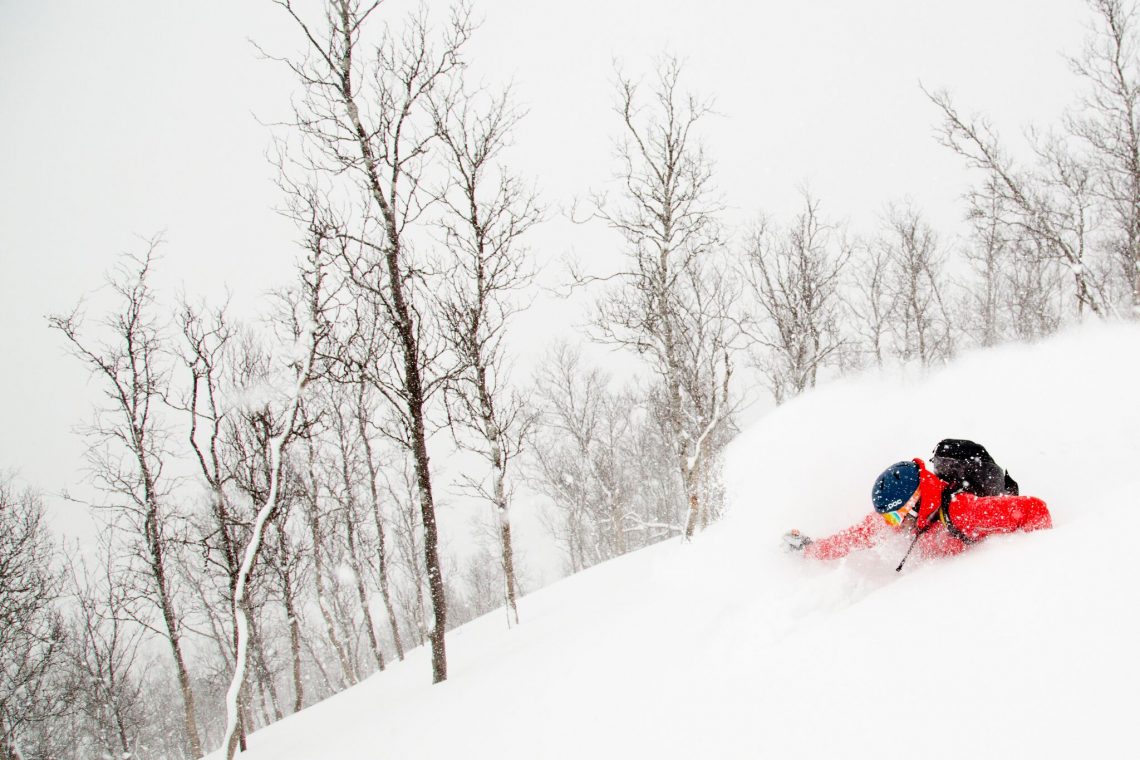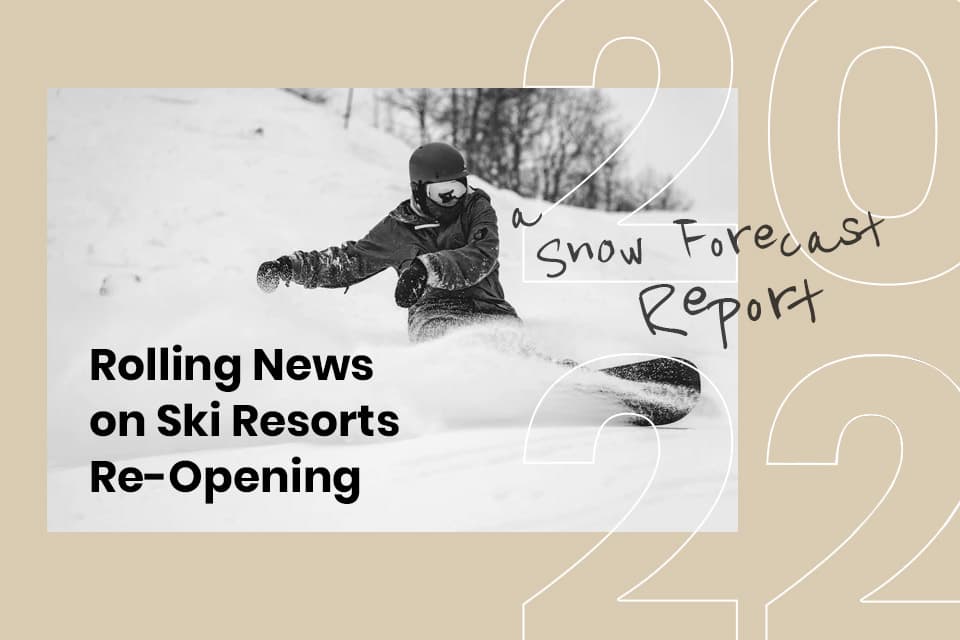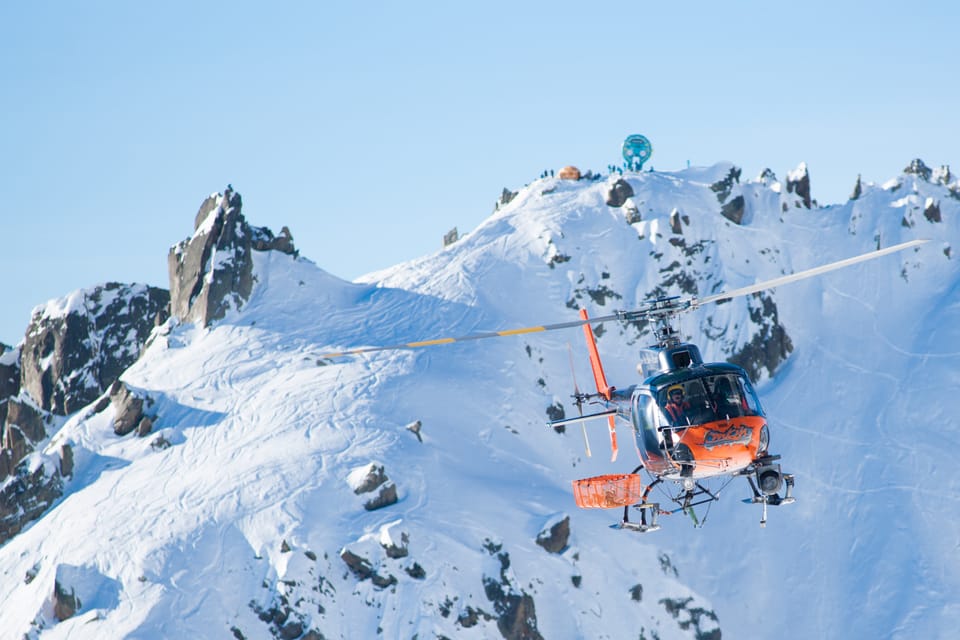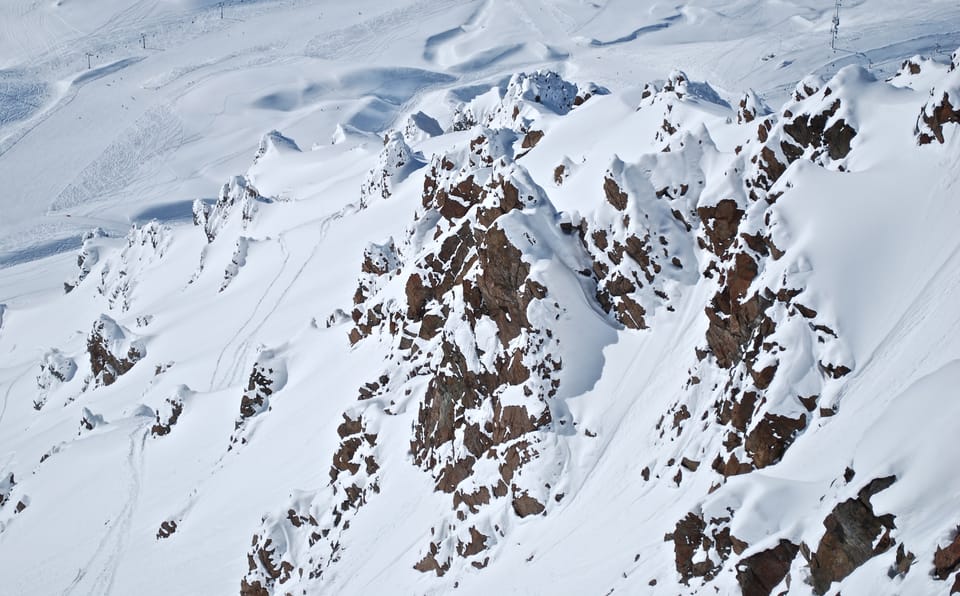PERFECT TREES

Alf Alderson enjoys some ski touring on Norway’s Arctic coast
The island of Senja is located at 69 degrees north, off Norway’s west coast, and with a population of just 7,800 souls spread over almost 1,600 square kilometres it’s out there in every sense of the word.
So the advice of our Swedish ski guide Dick Johansson make good sense – “Remember, we’re in a remote area, so ski carefully”. Dick is leading us up the 839-metre peak of Litgemoa on the Norwegian island of Senja.
The area’s remoteness means that when you go ski touring here, you’re pretty much guaranteed first tracks – both up and down the mountain. So it is that as our mixed group of Swedes (twin brothers Tomas and Daniel), Germans (Beate and Haymo) and Brits (Stephen and me) slog upwards for two hours with but one other sign of humanity – a small party of locals heading up a distant peak away to our right, who we’d met just before we set off up Litgemoa.
It turns out that although Senja is a popular tourist destination in this part of Norway, ‘popular’ is a relative term. I live in the ski resort of Les Arcs the French Alps in the winter, when ‘popular’ can mean lift lines of 20-minutes and utter chaos and carnage on the slopes if you visit in February, when every school kid in Europe is on their annual ski holiday.
‘Popular’ in Arctic Norway, on the other hand, meant that in the four days I was here the only other skiers I met – other than those I was skiing with – were the group we’d encountered at the start of the day, and a couple skinning up with their dog when later in the day. They informed us that they were from Tromsø, the regional capital some three-hours drive away – given that it only has a population of 72,000 I guess quiet slopes and empty mountains are only to be expected on Senja.
However, despite the joy of relative solitude the weather is not exactly playing ball as we make our ascent of Litgemoa; thick cloud cover and snow squalls result in flat light, and a harsh wind picks up the higher we get, but the scenery is never less than dramatic, particularly when we summit. The locals like to refer to Senja as ‘Norway in miniature’, although the scenery hereabouts is far from miniature.
From the top of Litgemoa the land plummets away to dark fjords which snake out to the steel blue Atlantic; everywhere vast, craggy peaks soar up from sea level to between 800 and 1000 metres, so although the elevation is quite modest the sense of height – and the feeling of elation when you’re treading along the summit ridge of Litgemoa – is exhilarating.
Despite the remote location, Senja is an ideal destination for ski touring, with lots of easy, low-angled approaches to the mountains, guaranteed snow, no altitude acclimatisation and relatively little avalanche danger since the coastal climate makes the layers of snowpack dense and reasonably stable.
It offers that characteristically Scandinavian mix of the height of 21st century civilisation sitting cheek by jowl with some of the wildest landscapes on Earth. Take our base at Hamn i Senja, for instance. This old fishing station dates back to the 17th century, and has a permanent population of around ten souls, but the 65-bedroom hotel here offers the height of luxury (including sauna and obligatory outdoor hot tub) and it feels almost decadent to return to these hedonistic surroundings after a hard day in the mountains; but, hey, a bit of decadence never hurt anybody.
Back in Victorian times, Hamn boasted a fishing quay including steamship berths, a store and warehouse, a bakery, a cod liver oil and ‘grakse’ factory (grakse, a solid by-product of oil production, was used in fishmeal manufacture), an ice store, fishermen’s quarters, a cowshed and a courthouse with guest rooms. The instigator of all these developments, one Adolf Lund, was regarded as a local ‘king’ and even had two tame sea eagles for pets.
By the 1880s over 650 people lived and worked in the village, either in fishing, in the local nickel mine, founded by Englishman Henry Hussey Vivian, or at the world’s first hydro-electric power station, built here in 1882.
However, Hamn’s fishing industry was all but dead by the 1980s, and in the 1990s the settlement turned towards tourism; a major fire in 2005 razed the village to the ground, since when it has been rebuilt in traditional style but with all the luxuries of contemporary Scandinavian living and a year-round tourist business.
Yet there’s still the ever-present feeling of the wild Arctic bearing down – literally given the sheer mountain crags rising vertically up out of the Atlantic hereabouts; you may enjoy a soak in the hot tub with a cold beer after your day on the ‘fjell’ (Norwegian for ‘mountain’) but when you’re out in the mountains you’re very much on your own.
This becomes apparent on day two of our stay. It’s March, so we have around 12 hours of daylight, and after breakfasting at what would be sun-up were there any sun we’ve driven through intermittent snowstorms to the valley of Kaperdalen, where Dick has decided that the lowering cloud and forecasts of heavy snow mean a summit push to the top of a mountain with no name isn’t feasible; instead we’ll climb up through birch forests which drape the valley’s lower slopes and, once at the treeline, ski back down, the repeat, effectively doing laps.
This is obviously better than nothing and there is a certain amount of method in this madness too; I’m tagging along on the trip with a couple of other journos who have been tasked with testing out a range of Polygiene-treated products – basically to see if we can make them smell as sour as do most pieces of clothing after a few days ski touring, since the whole concept behind Polygiene is that clothes which have been treated with it can be worn indefinitely without being washed and they won’t retain body odours.
Unlikely as this may sound it appears to work – how else to explain the fact that, for example, my Rab Flux base layer really doesn’t smell at all after being worn for four consecutive days and during more hundreds of metres of skinning than I care to remember?
Despite its Arctic location, Senja has a healthy display of trees and shrubs on its lower slopes thanks to the warming effect of the Gulf Stream just offshore (it was actually raining briefly at sea level earlier in the day) which is what allows us to get out and ski on days such as this, when high winds and low clouds reduce visibility to less than a hundred metres at times.
Over the course of an afternoon we do four laps before the weather closes in completely, with the pay-off for each 30-40-minute schlep upwards being two to three minutes of hooning downwards through perfect powder and between trees that according to Stephen: “Were obviously planted by the Norwegian Tourist Board to be the perfect
distance apart for tree skiing”. Or perhaps not…
Either way, much fun is had, not to mention lots of practise at the putting on and taking off of skins, which whilst not being the most exotic of activities is obviously something that’s worth getting down pat.
It doesn’t all go smoothly, however. We halt for lunch after lap three with Swedish ski photog Fredrik Schenholm set to join us after stopping to take some pics two- or three-hundred metres above us in the trees. After a few minutes, there’s no sign of Fred and we’re all beginning to wonder where he’s got to, until suddenly someone shouts “Here he comes, showing off on one ski!”.
Sure enough Fred is making his way towards the group riding mono, despite not coming across as the kind of guy to put on such showy displays; then we notice he has his other ski in his hand, neatly folded in two. Turns out Fred has hit a hidden rock and his ski literally folded in two at the binding – still, could have been worse, at least he’s ok…
I get chatting to Fred over lunch; it turns out he’s visited Senja before – in fact a couple of winters ago he rented a remote cabin in the mountains here and spent several weeks exploring on his skis. “I’d recommend it,” he says. “You need to ask one of the local guides for advice on where you can ski – in fact you should ski with a guide before you start picking their brains! – but it’s a great way of seeing this amazing part of the world as well as getting fit and forgetting about all the bullshit of 21 century living; no internet, no cell phone…”.
We do one more lap after lunch while Fred waits and curses his ski, this time slightly north of where we’d earlier been ascending, up the side of a small creek, and by the time we’re ready to turn around and descend the snow is coming down in flakes the size of bottle tops.
We ski back to the parked van, where we’ve wisely stashed a crate of beer, deciding that we’re gonna wimp out of any more skinning and enjoy some drinking in the blizzard instead, which is where a guide really earns his money; Dick is driving…
That evening at the cosy lodge in Hamn gives me a chance to become the most popular guy in town by cracking open the bottle of Talisker whisky I’ve brought with me. Having been visiting Norway on and off since the 1970s I’m well aware of the eye-wateringly high price of liquor here and have consequently bought my own in the airport duty free in France, from where I travelled.
The downside of the Talisker is that after a few shots in the hot tub (constructed within an old fishing boat) Dutch courage arrives on Norwegian shores and I become one of several in our group who decide it would be a good idea to dive into the Atlantic, which is conveniently located about 25-metres away. And I can tell you that when you leap into 40-degree water in a pair of boardies you definitely need both a hot tub and a glass of fine whisky to be in the immediate vicinity afterwards…
The rest of the trip is besieged by snowstorm and blizzard, so our touring has to be restricted to peaks such as the modestly-sized Purka (495m) and Norbakken (height unknown) on Bergsfjorden.
We park up in the small village of Bergsbotn where it’s snowing heavily, meaning we can skin up from right beside the fjord – literally starting at sea level. The snow falls constantly, varying from light showers to squalls so heavy that once above the tree line it’s virtually impossible to see where you’re going.
Fortunately, Dick is used to these kind of conditions. A former chairman of the Swedish Mountain Guides Association, he’s based to the east, just across the border in Sweden, where he owns and runs Abisko Mountain Lodge in terrain similar to where we are now (minus the ocean).
Setting a leisurely pace, Dick advises us: “Don’t rush; it’s not a race” and leads the way, first through close packed birch trees then across wind-whipped, snow-lashed open slopes towards the summit of Purka in what are pretty much whiteout conditions, which kind of ruins the idea of hooning back down in all this fresh pow – there are enough steep drop-offs and small cliffs around here to ensure that no one wants to lose sight of the Dick out front, and even he is finding it difficult to judge the angle of the slope at times.
Once we get back into the trees things become more fun, however. It appears that the Norwegian Tourist Board’s Tree Spacing Specialist has been back at work again as the timber is set just so for allowing reasonably high-speed skiing without too much risk of collision; in fact I come closer to skiing into Daniel than any arboreal obstacle.
Our descent takes us all the way back to the shores of Bergsfjorden, when, of course, the snow stops falling and the crags and peaks of this ancient landscape are briefly revealed in all their glory. I’ve been fortunate enough to enjoy summit to sea descents in a few other places besides Norway and there’s always a particular allure to this combination of streel blue ocean, dense grey crags and dazzling white snows.
I briefly envy the few residents of Bergsbotn for the awe-inspiring backdrop to their small and unknown settlement, but whether I’d want to live this far from the more mundane aspects of ‘civilisation’ – bars, restaurants, cinemas etc. – is another matter.
When we get back to Hamn it’s time for the usual ten-times-a-day scan of the weather charts, and it seems we could be in luck tomorrow – the weather is forecast to clear. That said, we only have the morning free before the three-hour drive to Tromsø for the flights back to our respective homelands.
A weather forecast that has to take in the twin variants of ocean and mountain can’t be expected to be accurate to within more than a few hours, but despite this the decision is taken to throw down a pre-dawn breakfast on the basis that if we’re on the hill as long as possible in the morning then we have the best chance of catching the sun should it decide to shine.
But it doesn’t…well, not at first. We head to the centre of the island to schlep up peaks unnamed through the now usual tree cover, the summits yet again hidden in low cloud, but as we emerge from the trees an unfamiliar brightening of the skies starts to take place, until eventually a watery Arctic sun glows weakly from behind thinning cloud cover.
Gradually a wild Nordic landscape materialises around us; rolling hills rounded by aeons of ice, snow, wind and water, rising up through the low forests like the head of an enormous bald giant; the flat, drab white surfaces of frozen lakes here and there with glints of blue where the snow has been scoured from the surface, and shining black watery shorelines where the grip of winter is letting go; and nothing other than the gentle soughing of the wind and our own laboured breathing.
If only this had happened when we’d been on the summit of Litgemoa, or above the waters of Bergsfjorden! No matter, I still feel happy and privileged to be here at the top of Scandinavia in every sense of the word; and in a way, Senja has performed the ideal trick as far as any visitor is concerned – it’s shown us what we’ve been missing at the very end of our stay (not that the we haven’t had a ball anyway), providing the perfect inspiration to return.
MORE INFO
Alf Alderson’s trip was organised by Pure Ski Touring www.pureskitouring.se
Accommodation was at Hamn i Senja Lodge www.hamnisenja.no
For more information on Polygiene products go to www.polygiene.com
For complete ski packages browse www.sno.co.uk

